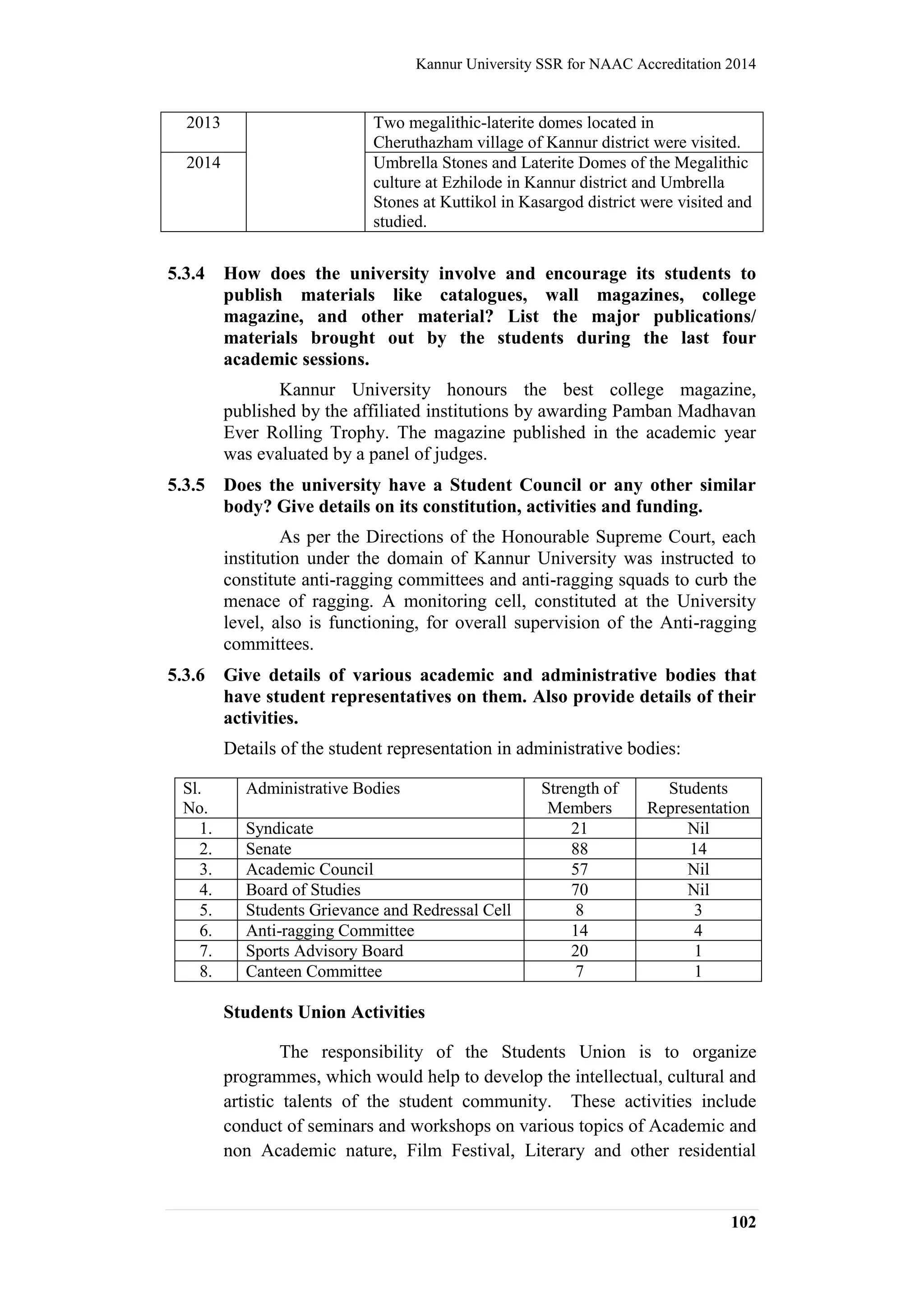The document provides an executive summary of the Kannur University Self Study Report (SSR) for NAAC accreditation in 2014. It summarizes the establishment and growth of Kannur University over 18 years since its inception in 1996. Key points include:
- Kannur University was established to provide higher education opportunities in underserved regions of North Malabar.
- It has expanded from 2 departments and 18 affiliated colleges to 34 departments, 105 affiliated colleges, and 7 campuses across rural and tribal areas.
- Enrollment has grown to over 61,000 students across university programs and affiliated colleges.
- The university has established various infrastructure and facilities including libraries, hostels, sports facilities, and research

































































































































